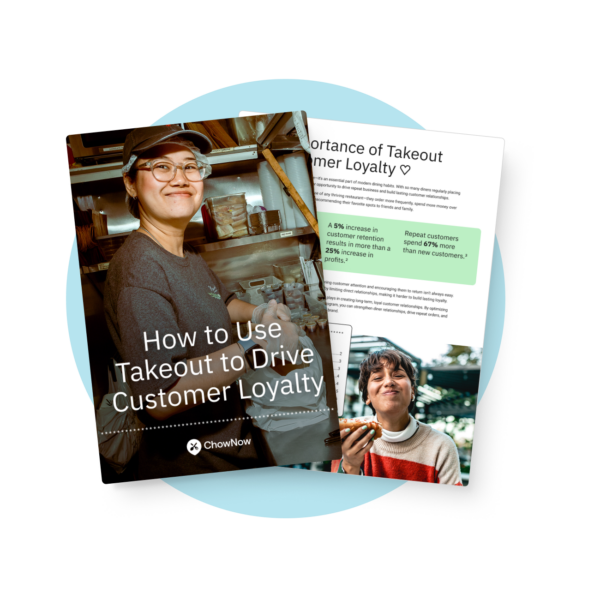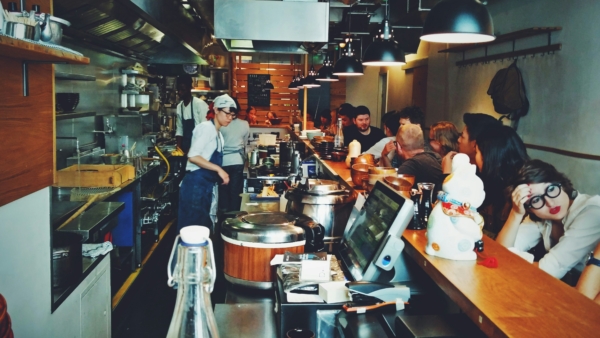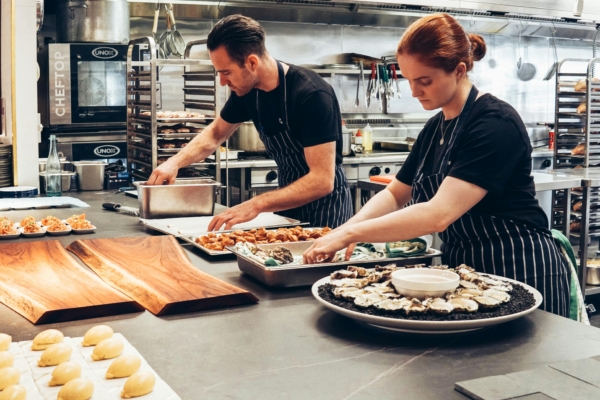Restaurant Cost Control Strategies Every Operator Should Be Using

At its core, every decision a restaurant owner makes is influenced by two things:
- Wanting to give customers an exceptional dining experience through food, drinks, and service
- Controlling the costs that come with providing that experience
Doing number one well means you’re making great money because large groups of customers visit your restaurant daily.
Doing number two well means more of that money going directly into your pocket because you’ve learned strategies that make every dollar count, and you know what numbers to monitor so you can adjust, adapt, and stay profitable.
This doesn’t mean cutting corners and sacrificing the customer experience; it’s about knowing where your money is going, spotting leaks early, and fine-tuning what’s already working.
In this article, you will learn:
- The five most important restaurant costs to track and manage
- Easy strategies for controlling food costs and labor costs
- Tactics to save money without hurting your guest experience
Let’s start with the big picture and learn where your money is actually going.
The Main Costs Every Restaurant Needs to Watch
Before you can cut costs, you have to know exactly how much you’re spending and where it’s going.
While every restaurant is different, they all share a common set of restaurant costs that add up fast.
These include:
- Food Costs
- Labor Costs
- Occupancy Costs
- Operating Costs
- Marketing and Promotions Expenses
Every successful restaurant owner knows that tracking these isn’t just a bookkeeping exercise; it’s how you spot opportunities to save money, collect data for better decision making, and run more efficiently.
We’ll start by breaking down your prime costs—food and labor—since they’re not only your biggest expenses, but also the ones you have the most control over.
From there, we’ll walk through the other major cost categories and share practical strategies to help you cut back without sacrificing quality or guest experience.
Food Costs (COGS)
Your food costs, or cost of goods sold (COGS), include everything that goes into producing your menu items, including:
- Recipe ingredients
- Beverages
- Condiments
- Disposables, like to-go containers, straws, and napkins
Tracking your food costs percentage helps you understand how much of your revenue is being spent on your menu.
For most restaurants, the ideal food cost falls between 30% and 40%, though that number can vary depending on your concept and location.
If your average food cost percentage is too high, it can wipe out profits even when sales are strong. Factors like portion size, seasonal ingredients, and market price changes all affect this number, which is why inventory management and regular updates to your recipes and pricing matter.
Labor Costs
After food costs, labor costs are the second of the two major expenses every restaurant has to contend with.
This includes hourly wages, payroll taxes, employee benefits, management salaries, and the hidden costs of manual schedules, overtime, and scheduling inefficiencies—for example, how much money you’re losing from last-minute schedule changes or people clocking in early.
A good labor cost percentage to shoot for is between 20%-30%, depending on your service style and local wage laws.
Your labor cost percentage gives you a snapshot of how lean or bloated your staffing model is.
Are you overstaffed on slow days?
Understaffed when you’re slammed?
In many cases, controlling labor costs is less about cutting people and more about scheduling smarter and cross-training your existing employees. The more you align your labor with your real demand, the better your margins will be.
Occupancy Costs
Occupancy costs are any expenses associated with keeping and maintaining your physical space.
Fixed costs like rent, property taxes, insurance, and utilities are all part of your occupancy costs. Unlike variable costs, these tend to stay the same month to month, which makes them easier to predict but harder to change.
Still, there are ways to chip away at occupancy-related expenses, like upgrading to energy-efficient lighting or negotiating better terms when your lease is up for renewal.
Operating Costs
Operating costs are the day-to-day expenses to keep your restaurant functioning, like:
- Cleaning supplies
- Light bulbs
- Paper products
- Uniforms
- Software
- Maintenance
- Tech tools (software)
- POS system
- Pest control
It’s easy to overlook the items in this category because no single thing seems massive, but together, they add up fast.
Many restaurants lose money here without realizing it. You might be paying for unused software subscriptions, over-ordering supplies, or missing out on better deals from vendors.
A quick audit of your operating costs can uncover easy ways to save money and tighten up your systems.
Marketing and Promotions Expenses
While this category doesn’t always show up in basic accounting reports, it should absolutely be on your radar.
This includes your social media ads, loyalty programs, printed flyers, local event sponsorships, discounts, and PR.
If you’re using a restaurant management system with built-in marketing tools, it can be easier to track what’s genuinely working and what’s not—if not, it’s easy to spend a lot without seeing results.
The real question isn’t if you should market—it’s whether you’re spending those dollars in ways that actually bring people in and build long-term loyalty.
If you’d like a deeper dive into these restaurant costs—including how to calculate them—check out our article: Restaurant KPIs Every Operator Should Track (With Easy-to-Use Formulas).
Simple Restaurant Cost Control Strategies That Actually Work
You don’t need a degree in accounting to take control of your restaurant costs and make these simple strategies work.
Most operators just need clearer data, tighter systems, and to implement a few new habits that will dramatically change their bottom line.
These aren’t sweeping overhauls; they’re practical, real-world strategies you can start using right away to cut unnecessary expenses and stay profitable.
Food Cost Control
If you’re not actively controlling food costs, you’re more than likely losing money without realizing it.
Between food waste, spoilage, and inconsistent portions, you’re total food costs can balloon quickly.
Here’s how to clamp down on your food costs:
- Track waste and adjust orders accordingly. What’s being tossed at the end of the night isn’t trash; that’s wasted revenue. Something that’s not often taken advantage of in restaurants is that food waste can sometimes be used as a tax write-off. To do this, though, you have to be meticulous about your food waste tracking, so you can prove each day’s losses.
- Use standardized recipes and portioning tools to ensure your staff is hitting your ideal food costs every time a dish goes out. To do this successfully, you need scales on every station. Cooks can have different ideas about what makes a good portion size. Scales ensure every dish is exactly the same.
- Create specials that use the raw materials you already have in-house or seasonal ingredients you can buy at the best market price. It’s one of the easiest ways of reducing food costs while keeping your menu interesting.
These simple strategies mean you can reduce food costs without having to give up quality.
Labor Cost Control
Labor costs are one of the most challenging areas to manage, specifically because demand fluctuates from day to day. However, you can start controlling labor costs without cutting staff or sacrificing customer service.
Here’s how to keep your labor cost percentage in check:
- Cross-train existing employees so you can run a leaner workforce during slow shifts.
- Use scheduling software to schedule smarter, aligning staff hours with actual sales patterns, not gut instincts.
- Set clear policies to prevent early clock-ins, late clock-outs, and accidental overtime that quietly eat away at your total wages. Most scheduling software has alerts or features to help you control this issue.
Cutting staff isn’t the only solution to controlling labor costs; it’s about maximizing the value of every scheduled hour on the clock.
Occupancy Cost Control
While rent may be a fixed cost, there are still strategic ways to reduce your total occupancy cost without having to relocate your business.
Here’s what to try:
- Negotiate lease terms if you’re a long-standing, on-time tenant. Landlords are often open to reducing or delaying increases in restaurant costs when you have a strong track record.
- Lower utility-related operating costs by switching to LED bulbs, installing smart thermostats and motion detector lights in low-traffic areas, and performing regular maintenance on HVAC and kitchen equipment.
These small adjustments can have a big impact on your total costs month after month, giving you breathing room financially.
Operating Cost Control
Most restaurants spend more on operating costs than they realize because it’s lots of small expenses spread across different vendors and platforms.
Here’s how to keep this from getting out of control:
- Audit all software, subscriptions, and services at least once a quarter. If you haven’t used a tool in the last few months, it may be time to reconsider it.
- Consolidate vendors and build relationships with multiple suppliers to get better deals on raw materials, paper goods, and cleaning supplies.
- Use a restaurant management system or POS system to track inventory and flag unnecessary purchases, especially if you’re managing several locations or teams.
Marketing Spend Control
Marketing can either boost profits or burn cash—it all depends on where you spend and how you track ROI. If you’re spending more than you’re getting back, it’s time to reassess your strategy.
- Focus on owned channels like email and your restaurant website. They’re lower-cost, high-impact options that let you speak directly to guests.
- Instead of over-discounting through third-party platforms, run in-house promotions that keep you in control of the guest experience and menu prices.
- Leverage what you already have: use table tents, receipts, and staff prompts to grow your email list and save money on paid ads.
- Focus on building local partnerships and creating organic content that genuinely connects with your audience.
Cost control isn’t about nickel-and-diming every line item—it’s about building a smarter, more resilient restaurant that can weather slow seasons, rising prices, and anything else the industry throws at you.
Restaurant Cost Control Isn’t a One-Time Fix—It’s an Ongoing Discipline
Margins erode slowly, and if you’re not actively watching them, they’ll disappear before you notice. The operators who stay profitable aren’t the ones who cut the most—they’re the ones who course-correct the fastest.
Contact ChowNow to learn how Centralized Reporting can help you monitor your restaurant KPIs in real time and make faster, smarter decisions that protect your margins.






